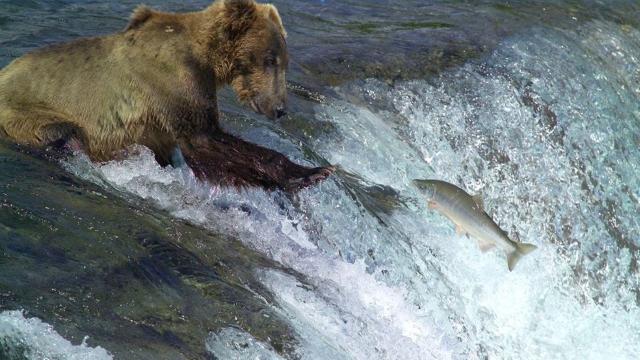Alaska: Locals first noticed the die-off of Salmon and scientists descended on the field to study the issue. The Yukon Inter-Tribal Fish Commission got involved. Its director, Stephanie Quinn-Davidson, accompanied by a team of scientists, took a trip along the Koyukuk River in Alaska at the end of July to gather first-hand information. They counted 850 dead unspawned salmon and felt the actual figure could be much higher. In order to ascertain the cause of death, they cut open the fish and found the eggs intact. They looked for signs of lesions, parasites, and infections.
Those were absent and they concluded that the heatwave was responsible for the situation.
CNN reports that Stephanie Quinn-Davidson admitted the salmon die-off on such a large scale was difficult to explain. She had "never heard of anything to this extent before." Scientists have been keeping track of the stream temperatures around the Cook Inlet since 2002. It is located south of Anchorage and it has never registered a temperature above 76 degrees Fahrenheit. However, on July 7, the west side of the Cook Inlet registered 81.7 degrees. Obviously, it was a matter of concern for the wellbeing of the salmon.
Alaska has been in the throes of an unprecedented heat wave this summer, and the heat stress is killing salmon in large numbers https://t.co/vGn3x6cw1I
— CNN (@CNN) August 17, 2019
Climate change is playing havoc with nature
Sue Mauger is the science director for the Cook Inlet keeper.
She and her team published a study in 2016. It pertained to the probable temperatures in the streams of Alaska due to Climate change. However, as things stand today, their projections have gone haywire. In her own words, "2019 exceeded the value we expected for the worst-case scenario in 2069." She also pointed out the ill effects of overfishing that puts the population of fish under stress.
This goes to show that climate change can devastate lives through forest fires and typhoons on land and on salmon in the water. It is now considered a threat to marine lives.
Salmon dying in Alaska Rivers because of warm water. @CBSNews reports: https://t.co/1Xx6DRzAoA
— Jeff Berardelli (@WeatherProf) August 13, 2019
CNN goes on to add that another factor is the presence of Orcas.
They are also endangered and feed on salmon. Incidentally, the Environmental Protection Agency took a negative approach and agreed to a mining project in Alaska. The project could destroy one of the world's most valuable wild salmon fisheries. It came about soon after President Donald Trump met with Alaska's Gov. Mike Dunleavy.
Death of salmons in Alaska attributed to heat stress
According to Juneau Empire, this summer Alaska faced unusually high temperatures. That resulted in die-offs of unspawned salmon. The warm waters create a sort of “thermal block.” It transforms into a wall of heat that the fish do not swim past, delaying upriver migration. Stephanie Quinn Davidson attributes these to heat stress.
Locals say a similar situation was there four or five years back but the numbers are considerably more this year. Stephanie said the dead fish looked healthy and there were no signs of any disease, infections, or parasites. However, she points out that the die-offs coincided with the week of high temperatures.
![Amazing salmon fishing boat in Alaska, Big Catch Net Fishing on the Sea! [Image source/Deep Sea Fishing Life YouTube video] Amazing salmon fishing boat in Alaska, Big Catch Net Fishing on the Sea! [Image source/Deep Sea Fishing Life YouTube video]](https://staticr1.blastingcdn.com/media/photogallery/2019/8/17/660x290/b_502x220x82/amazing-salmon-fishing-boat-in-alaska-big-catch-net-fishing-on-the-sea-image-sourcedeep-sea-fishing-life-youtube-video_2310731.jpg)


